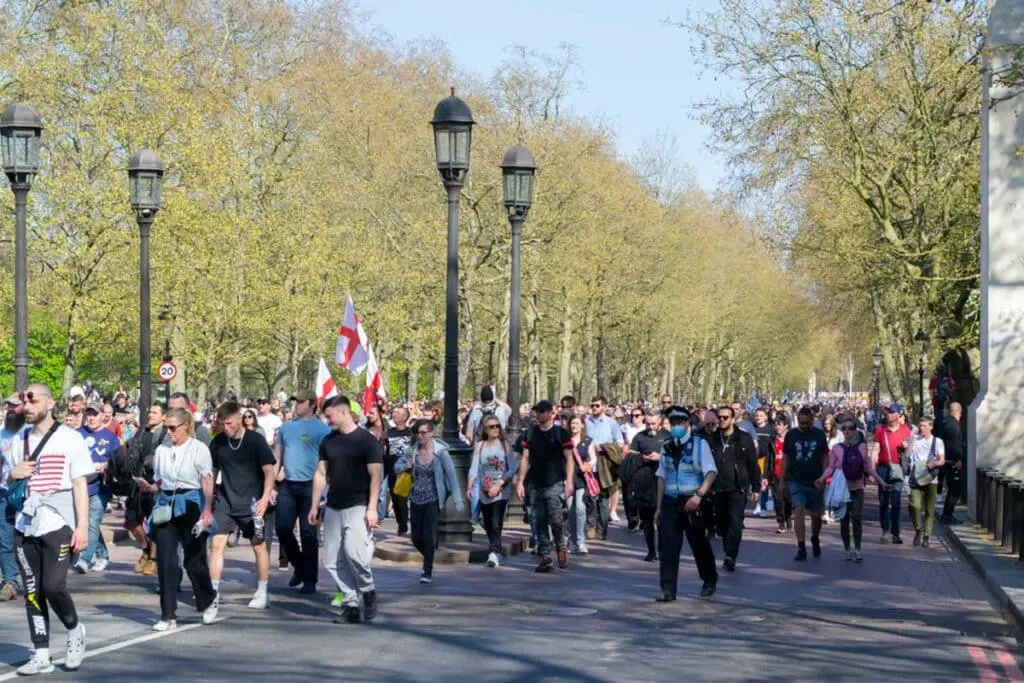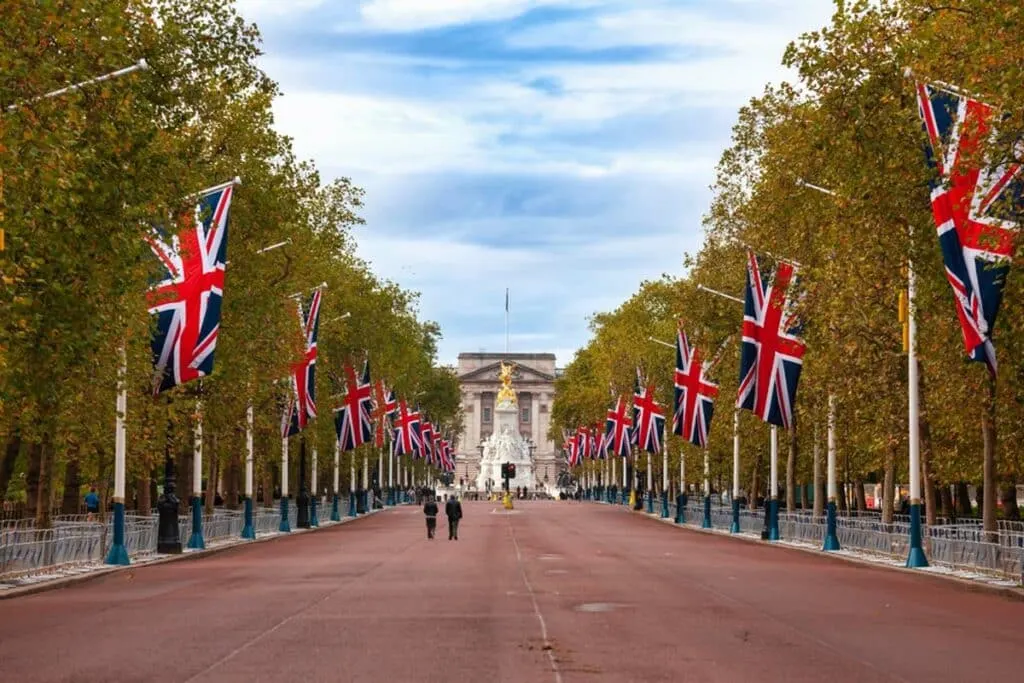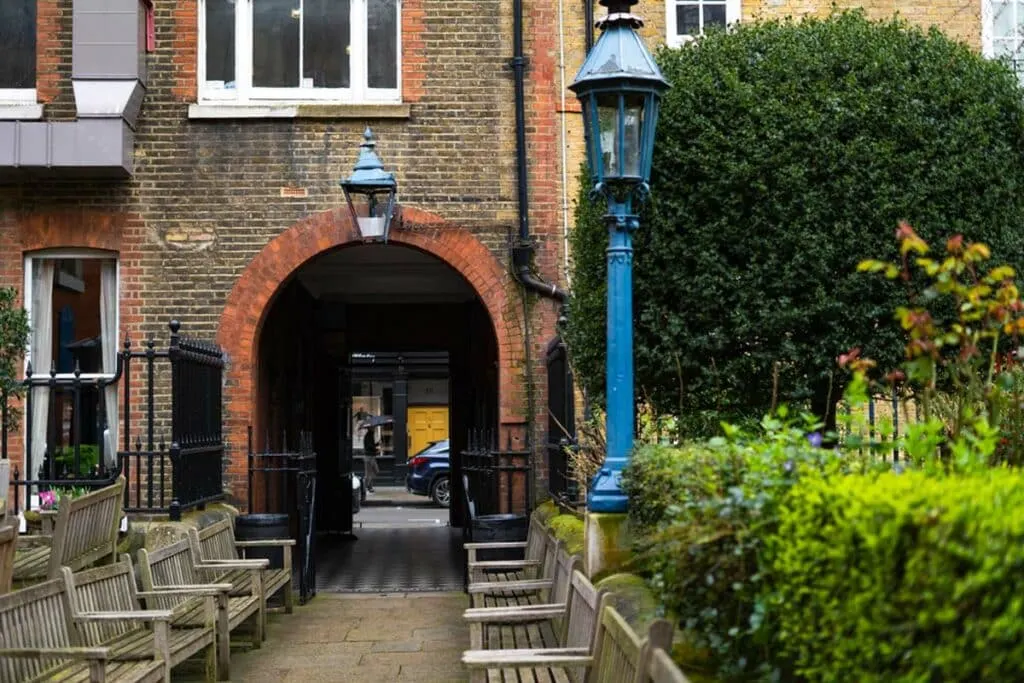It’s time to discover the last remaining gas lamps of London. Here’s where to find them.
Words by Olivier Guiberteau
London was once illuminated by thousands upon thousands of gas lamps with their flickering orange glow throwing shadows across the many cobblestoned streets.
A pioneering city in so many ways, London was the setting of the first public demonstration of gas lighting over two hundred years ago and its network of gas lamps was soon the envy of the world.
However, times change, and today you may struggle to find any gas lamps left in modern London – without a little help that is.
That’s where we come in…
Are There Still Gas Lamps in London?

While old London once teemed with gas lamps, its modern incarnation has seen numbers fall dramatically since the end of World War II.
And yet, in this city where history and modernity remain intrinsically linked, there are still roughly 1,500 lamps across the London area, some of which come with fascinating stories.
Their gradual disappearance had much more to do with practicalities and cost rather than aesthetics, but if you look hard enough (and *ahem* maybe have a little helping hand) you can still stand beneath a gas lamp in London and watch as its flames flicker in the night just as thousands once did across the city.
Where Can You Find London’s Gas Lamps?
Cecil Court & Goodwin Court

If there were awards for quaintest streets in London, then Cecil Court and Goodwin Court may well win. They are located close to Covent Garden and each have a splash of the Harry Potter charm to them – with both being touted as the real-life Diagon Alley.
It’s perhaps not surprising then that this is also where you can come to find some of London’s old gas lamps still illuminating the city’s historic streets with their flickering glow.
The earliest mention of Goodwin Court comes from 1690 with the name Cecil Court appearing around the same period. Both ooze with old-world charm and are certainly worth visiting, whether it’s to find the old gas lamps or simply amble down streets that transport you back to a very different era.
Birdcage Walk

Not necessarily one of the most well-known names in London but, this road – which roughly runs parallel with The Mall – is home to the oldest gas lamps in the city, complete with the insignia of George IV.
The Mall

Just around the corner lies the iconic Mall which connects Admiralty Arch with Buckingham Palace. It’s here where the old and the new collide, with gas lamps populating the St James’ Park side and electric lighting lining the opposite side.
Canada Gate Entrance & Green Park

Canada Gate is an impressive structure that sits between the area in front of Buckingham Palace and Green Park. It was installed in the early 20th Century as a memorial to Queen Victoria and, if you look up, you’ll notice some of the most attractive gas lamps in the whole city.
If you pass through the gate and enter Green Park, you’ll also see gas lamps lining the left-hand side of the path as you walk through the park.
Westminster Abbey

With such a rich history, it’s perhaps no great surprise to find gas lamps still alive and well near Westminster Abbey. The cloisters are still lit by gas lamps and in Dean’s Yard, close to the group entrance, you can find the abbey’s oldest gas lamp which is now over 200 years old.
St Paul’s & Covent Garden

Take a walk around the graveyard of this small church that sits opposite Covent Garden and you’ll see ten gas lamps that create a wonderful, if slightly creepy at times atmosphere.
Make your way into the thronging Convent Garden and take the time to notice the gas lamps all around you, in particular along Henrietta Street, which connects Covent Garden and Bedford Street.
The Patent Sewer Gas Lamp

Close to Covent Garden on Carting Lane, stands perhaps the most unique gas lamp in the entire city.
By the 19th Century, London was awash with filth and the stench that accompanied it. The city’s rapid expansion and the relative lack of understanding regarding waste and the harm it could cause meant London had become a horribly polluted place.
The Great Stink of 1858 was the catalyst that eventually led to the construction of London’s sewage system, but one major issue remained. How could noxious fumes be vented out of the sewers to prevent a build up of methane?
Initially holes were drilled around the city that allowed gas to escape, which addressed the methane problem but did little to help the smell. That was until Joseph Webb came up with an ingenious idea of using the gas emitting to power some of the city’s gas lamps – and so, the Patent Sewer Ventilating lamps were born.
Over time, their number dwindled as changes to the sewer systems occurred, but walk down Carting Lane and you can still see London’s last remaining ventilating lamp.
The History of Gas Lamps in London
The Oil Lamp System
With London rapidly growing during the 18th Century, it eventually became necessary to try and illuminate the city streets. Both as a way of boosting development and also to help lower crime.
In 1750, a system of oil lamps was introduced across the city and became immediately popular. People no longer needed to hire link boys, young boys who carried flaming torches and who could be hired to lead the way through London’s dark and often dangerous streets.
The First Gas Lamp
The first public demonstration of gas lamps may have occurred in London, but it was hundreds of miles away in Cornwall where a man by the name of William Murdoch first managed to light his home using gas lamps in 1792.
He later returned to Birmingham and continued his work in the field, but it was another man who stole his thunder.
The King’s Birthday
On 4th June 1807 – the birthday of His Majesty George III – Frederick Winsor, a German-born inventor who had settled in Britain, made history by giving the first public demonstration of gas lighting.
The exhibition took place on a wall that separated St James’s Park from Carlton House Gardens on the Mall and used wooden piping that was connected to a furnace further down the street.
The vast crowds that had gathered were well and truly wowed and Winsor went on to establish the Gas Light and Coke Company. By 1823, 40,000 lamps covered 215 miles of London’s streets.
The Rise & Fall of Gas Lamps
Gas lamps quickly become a fixture of many London roads and at their peak, there were over 100,000 across the city.
Initially, lamps would have to be lit each night using an 8ft brass pole with a pilot light, but eventually, timers were developed that could be pre-set, with later technological additions including reflectors, refractors and larger burners that would provide more light.
In the aftermath of World War II, with many parts of the city destroyed, gas companies decided that electricity would be a far more efficient and profitable way of illuminating London’s streets.
It was eventually decided that 1968 would be the year that London would completely switch to electrical street lamps, but as we’ve seen, many of these much-loved icons of the city still remain. They’re just that little bit harder to find these days.
London’s Gas Lamps: Practical Information
- Many of these gas lamps are closeby to each other. For example, Cecil and Goodwin Court are a short walk from Covent Garden and St Paul’s offering.
- Remember, there are around 1500 lamps remaining in London today – we’ve simply shared our favourites. Keep your eyes peeled, particularly in more quaint parts of the capital, and you might just spot a gas lamp.

